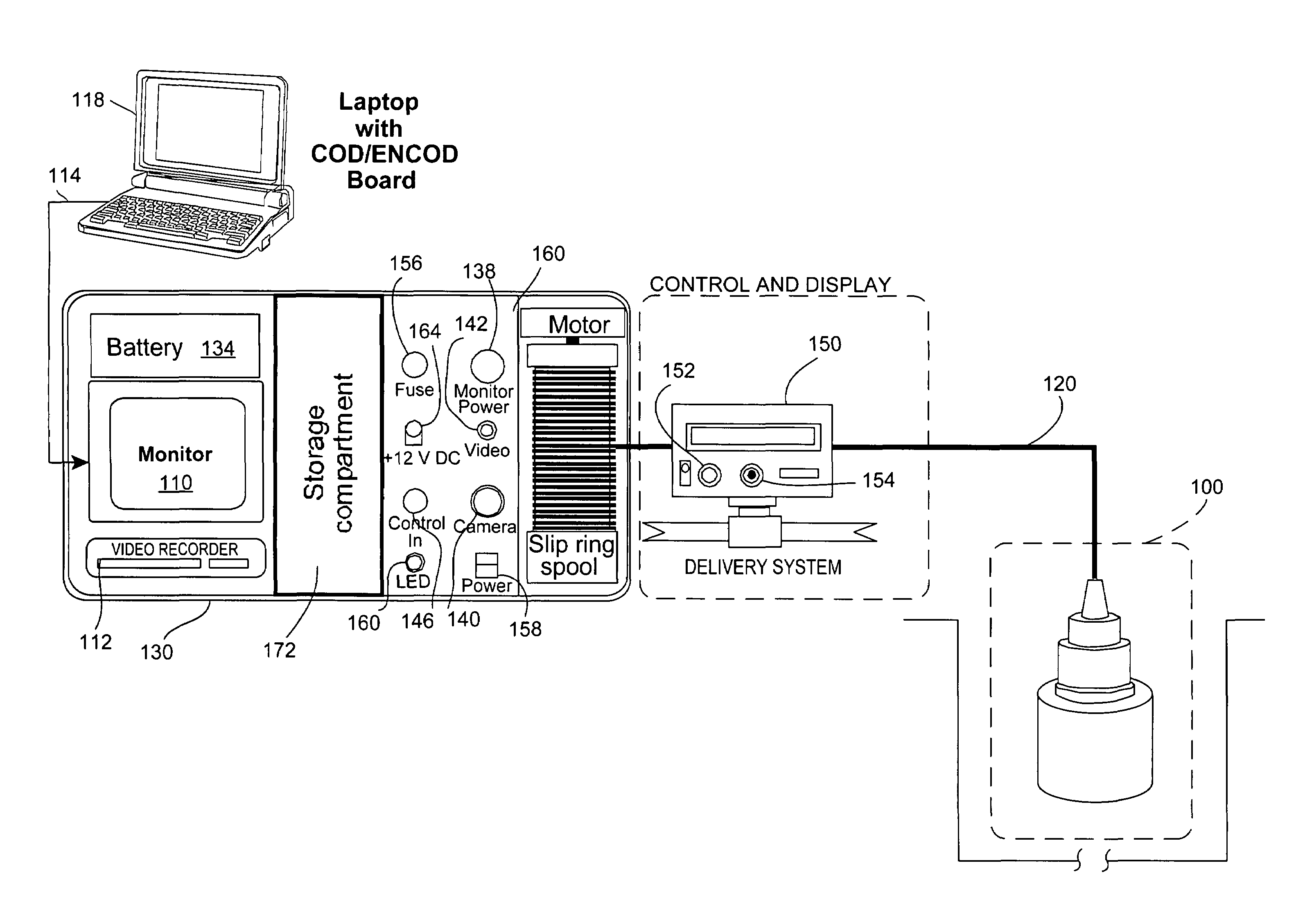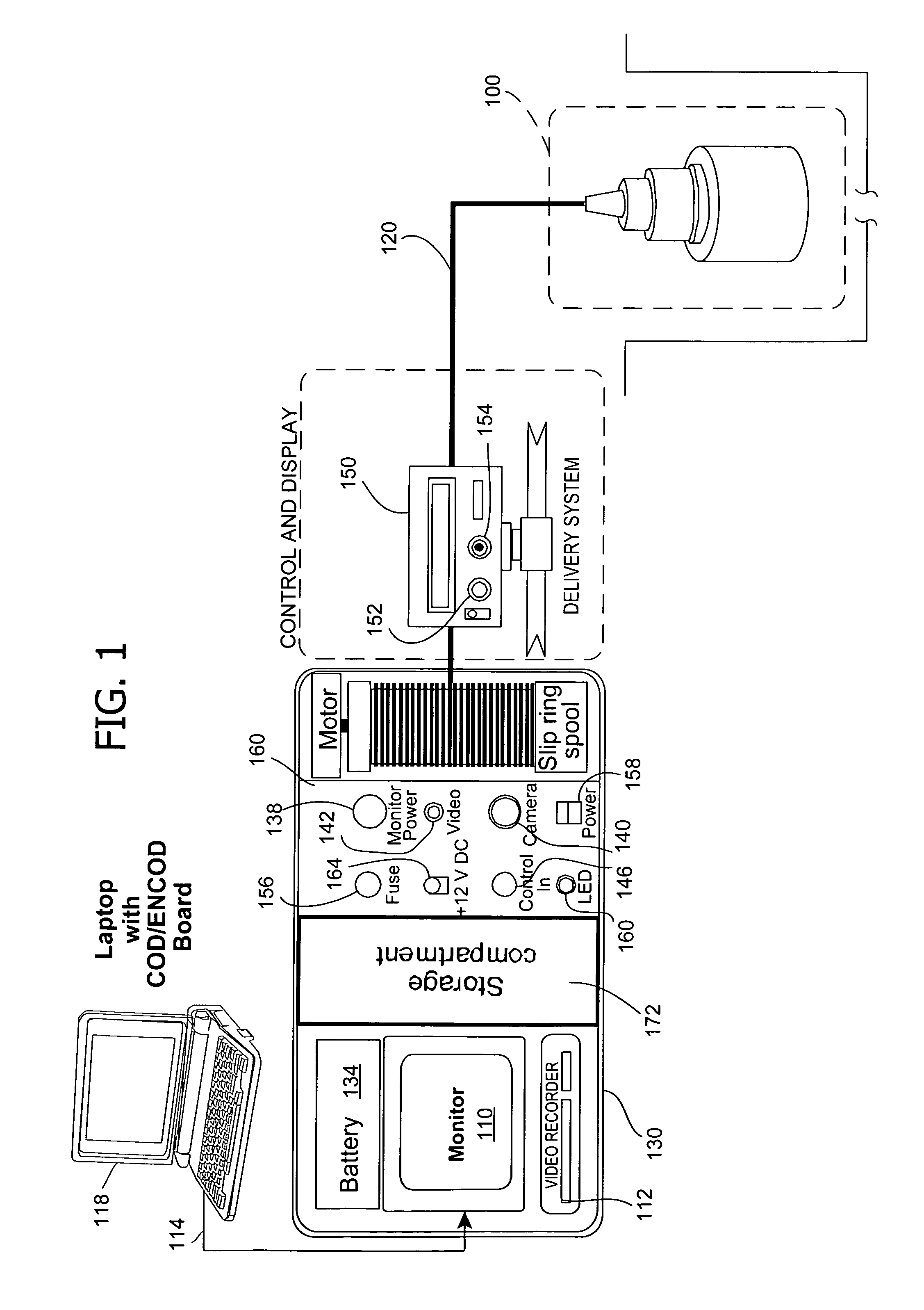Borescope for drilled shaft inspection
a technology for drilling shafts and inspection equipment, which is applied in the direction of borehole/well accessories, instruments, surveys, etc., can solve the problems of incomplete inspection, incomplete inspection, and final shaft defects that can influence the structural and bearing capacity of the finished support structure, so as to achieve reliable and accurate visual inspection, save the number of inspections, and save the effect of storage and retrieval
- Summary
- Abstract
- Description
- Claims
- Application Information
AI Technical Summary
Benefits of technology
Problems solved by technology
Method used
Image
Examples
Embodiment Construction
[0028]Referring now to the drawings, FIG. 1 illustrates a borescope system in block diagram form. As shown, the system includes a camera assembly 100 connected to a video monitor 110 (e.g., a relatively small, portable television) for visually inspecting a borehole. A typical borehole is several feet in diameter (e.g., about nine feet) and has an even greater depth (e.g., about 150 feet). It is to be understood, however, that a borehole describes any opening in the ground that has either a generally cylindrical geometry of a few inches to several feet in diameter and depth or a generally rectangular cutoff wall in the ground with a few inches to several feet in width / depth. The borehole can be dry or wet (at least partially filled with transparent, translucent, or opaque fluid). The borehole can be self supported, cased, or a pipe pile. The ratio of the size of the borehole to the camera chamber can be 1:1 or 28:1.
[0029]As described in detail below, the present system may be used to...
PUM
| Property | Measurement | Unit |
|---|---|---|
| depth | aaaaa | aaaaa |
| depth | aaaaa | aaaaa |
| diameter | aaaaa | aaaaa |
Abstract
Description
Claims
Application Information
 Login to View More
Login to View More - R&D
- Intellectual Property
- Life Sciences
- Materials
- Tech Scout
- Unparalleled Data Quality
- Higher Quality Content
- 60% Fewer Hallucinations
Browse by: Latest US Patents, China's latest patents, Technical Efficacy Thesaurus, Application Domain, Technology Topic, Popular Technical Reports.
© 2025 PatSnap. All rights reserved.Legal|Privacy policy|Modern Slavery Act Transparency Statement|Sitemap|About US| Contact US: help@patsnap.com



